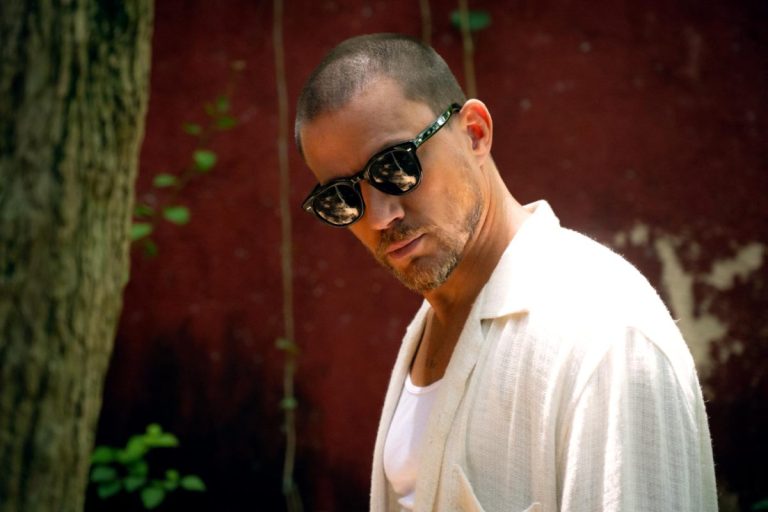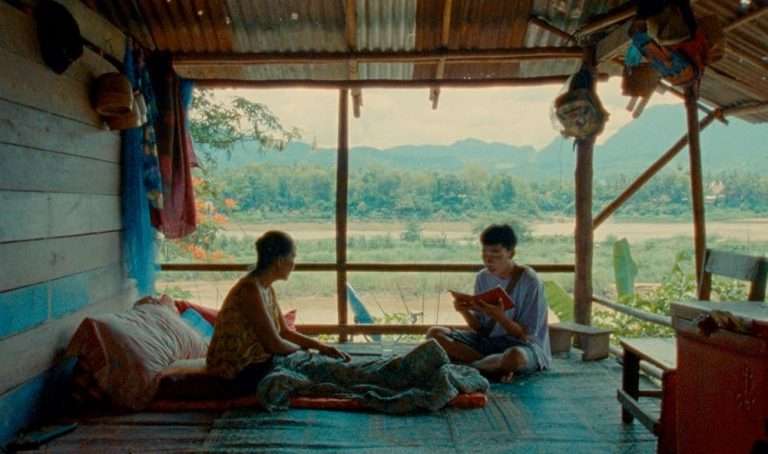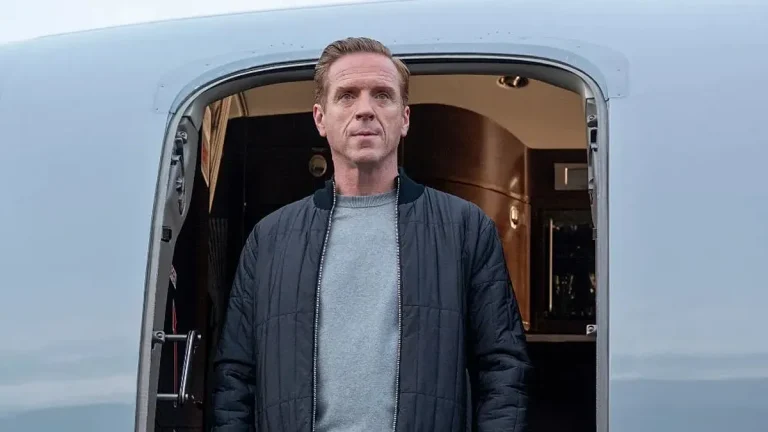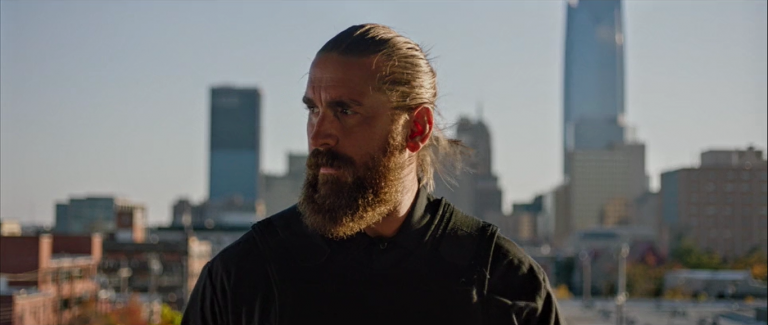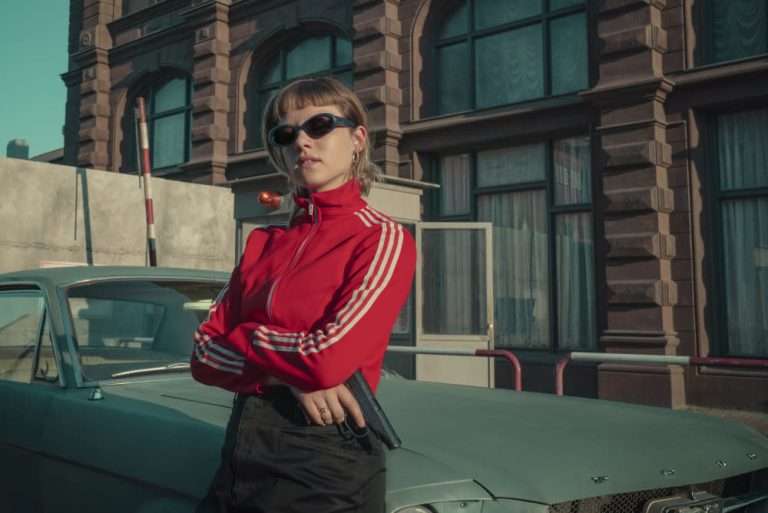Directed, photographed, and edited on a shoestring budget by George A. Romero and co-written by John Russo, “Night of the Living Dead” remains one of the most seismic inspirations in world cinema history. A cornerstone of the American independent film movement, it initially seems to box itself neatly into the horror genre: zombies clawing at the windows, desperate humans barricading themselves in a lonely farmhouse, survival running on pure nerve.
But scratch that surface, and the film’s fierce, kinetic spirit refuses to be contained. This wasn’t just a horror flick—it was a primal scream that proved you don’t need fat budgets and polished sets to make something that cuts deep and leaves scars. Shot and edited with a raw, dramatic urgency, it anchors its simple narrative in a chillingly tactile atmosphere. The brilliance of Romero and Russo’s script lies in its stark, almost surgical focus on survival, using the splintering human dynamics inside the farmhouse as a mirror to a society eating itself alive, culminating in one of the bleakest, most unforgettable endings ever shot.
The way “Night of the Living Dead” redefined pop culture isn’t just about statistics, box office numbers, or the radical mutation of horror tropes. It was—and still is—a deeply political act, whether Romero originally intended it or not. Casting Duane Jones, a Black American actor, as the lead wasn’t just a first; it was a gut-punch to an industry drenched in its own hypocrisy. But even stripped of all its cultural implications, even judged purely as a midnight movie, the film rips. Stylishly grim and hypnotic in its pulpy madness, it builds terror not through bombastic background scores but through the sheer dread etched on its characters’ faces, and the grotesque inevitability pressing in from the dark.
In the spirit of honoring this bloody, brilliant milestone, here’s a deep dive into the plot and themes of “Night of the Living Dead” (1968).
Night of the Living Dead (1968) Movie Plot and Synopsis:
What happens when Barbara and Johnny arrive at the cemetery?
Siblings Barbara and Johnny drive through rural Pennsylvania to a cemetery, intending to place a wreath on their father’s grave. As they stroll among the tombstones, Johnny teasingly recounts Barbara’s childhood fears, mocking her for being so scared of the place as a kid. When he spots a pale, disheveled man shuffling nearby, Johnny jokes, “They’re coming to get you, Barbara!” intending to spook her. Barbara tries to apologize to the man for Johnny’s antics, but the stranger suddenly attacks, grabbing and pinning her to the ground. Johnny rushes to her defense, but during the struggle, the man strikes him down, killing him.
Terrified, Barbara flees. She manages to reach their car and attempts to drive away, but crashes into a tree almost immediately. Forced to abandon the vehicle, she escapes on foot, still pursued by the strange, relentless man. She finds her way to a nearby farmhouse, which appears deserted. Inside, while cautiously exploring, she discovers a horrific sight: a mutilated, half-eaten corpse at the top of the stairs. The traumatic sequence of events sends Barbara into a near-catatonic shock.
Who arrives at the farmhouse to help Barbara, and how does he handle the situation?
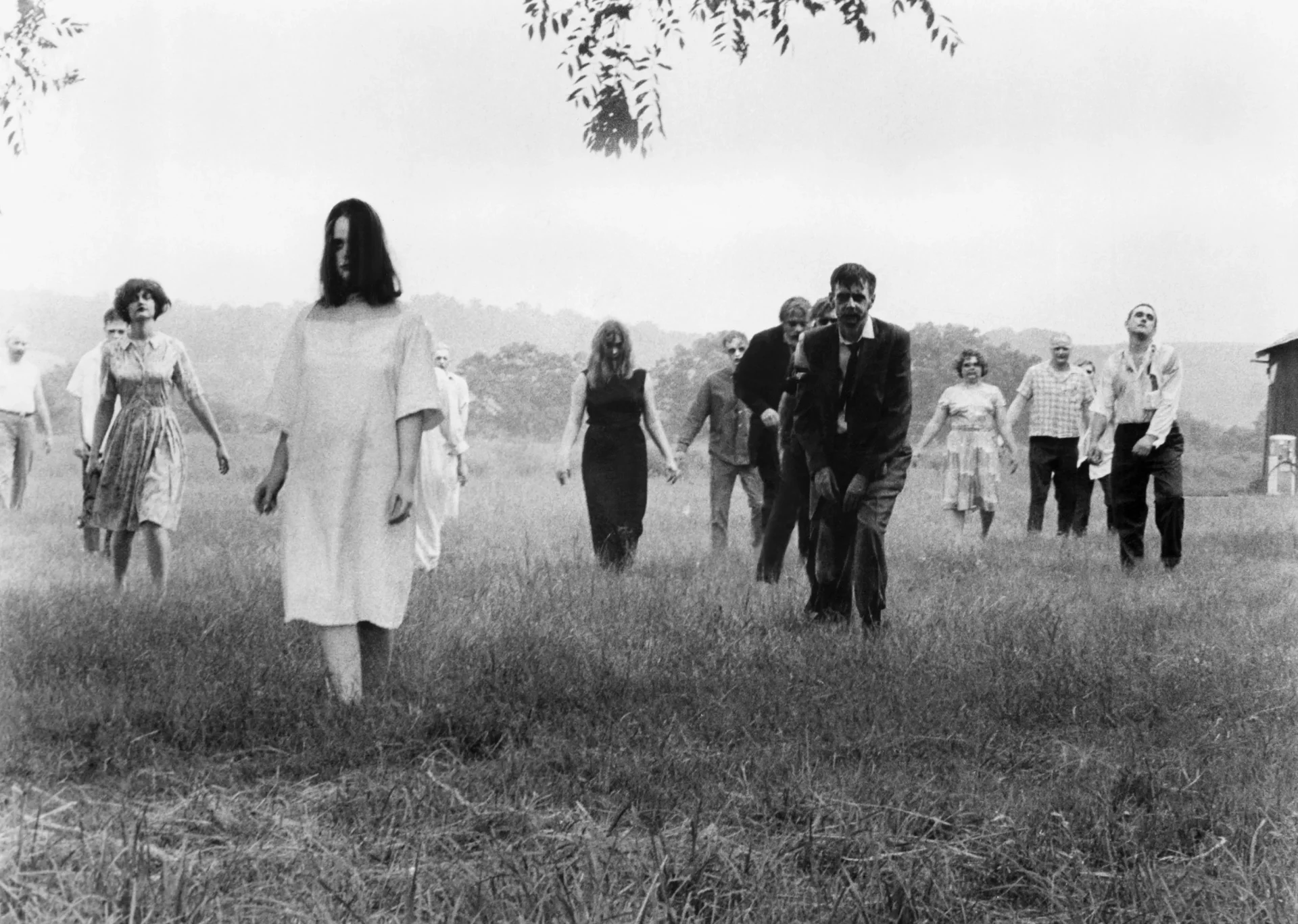
Meanwhile, the pale man is not alone — a horde of similarly ghoulish figures begins to descend on the house. As Barbara cowers inside, a man named Ben arrives, dodging the creatures outside and managing to barricade himself within the farmhouse. Mistaking Barbara for the homeowner, Ben questions her about supplies and light sources, but she’s too traumatized to respond coherently.
Taking charge, Ben systematically boards up the doors and windows, with Barbara offering limited, almost robotic assistance. He sets fire to a ghoul’s corpse outside to ward off others. In a brief respite, Ben explains how he was at a local diner when he witnessed one of these creatures kill a man; realizing the scope of the threat, with dozens of these monsters swarming around, he escaped in a truck and wound up here. Barbara, still spiraling emotionally, babbles incoherently about Johnny’s death. When she becomes vehement, Ben is forced to slap her unconscious to calm her down.
Who else is hiding in the farmhouse, and how did they end up there?
When Barbara awakens, she discovers they are not alone. Two men — Harry and Tom — along with Harry’s wife Helen, their young daughter Karen, and Tom’s girlfriend Judy, had been hiding in the farmhouse cellar. Harry’s group fled there after the ghouls overturned their car and wounded Karen with a bite. Tom and Judy, meanwhile, had heard emergency broadcasts about a wave of brutal killings.
Tension immediately erupts between Ben and Harry: Ben argues they should reinforce the house and fight, while Harry insists on barricading themselves in the cellar. Harry’s cowardice and stubbornness breed resentment, but for now, they coexist uneasily. Outside, the horde of ghouls continues to grow.
The group listens anxiously to emergency radio and television reports. News anchors confirm the dead are rising to consume the living and can only be stopped by a shot to the head or being burned. Posse groups armed with rifles are forming to hunt them down. Scientists theorize that radiation from a returning Venus probe may have triggered the phenomenon.
Night of the Living Dead (1968) Movie Ending Explained:
What is Ben’s plan to escape, and what goes wrong?
Eventually, the group discovers a working television, and a broadcast announces that rescue centers are being set up across the state. Ben proposes a daring plan: refuel his truck using the gas pump out back, gather supplies, and drive to safety. He, Tom, and Judy set out, using torches and Molotov cocktails to keep the ghouls at bay. But the plan spirals into catastrophe when spilled gasoline ignites, causing the truck to explode, killing Tom and Judy. The ghouls quickly descend on their charred remains, feasting gruesomely.
How does the night end for the remaining survivors, and what is Ben’s fate?
Ben barely makes it back to the farmhouse, but Harry, in a fit of cowardice, initially refuses to let him in. Furious, Ben forces his way inside. As the night deepens, the farmhouse defenses crumble. Power fails, plunging them into darkness. The ghouls breach the house. Amid the chaos, Harry tries to seize Ben’s rifle but is shot in the stomach. Mortally wounded, he stumbles into the cellar, collapsing beside his injured daughter.
Karen, succumbing to her bite, dies and reanimates as a ghoul. She devours her father’s corpse and kills her mother, Helen, by repeatedly stabbing her with a masonry trowel. Barbara and Ben try to fend off the growing onslaught. But when Barbara spots her zombified brother Johnny among the attackers, she freezes. Johnny seizes her and pulls her into the horde. Ben retreats alone to the cellar, barricading himself inside. There, he is forced to shoot the reanimated corpses of Harry and Helen to survive.
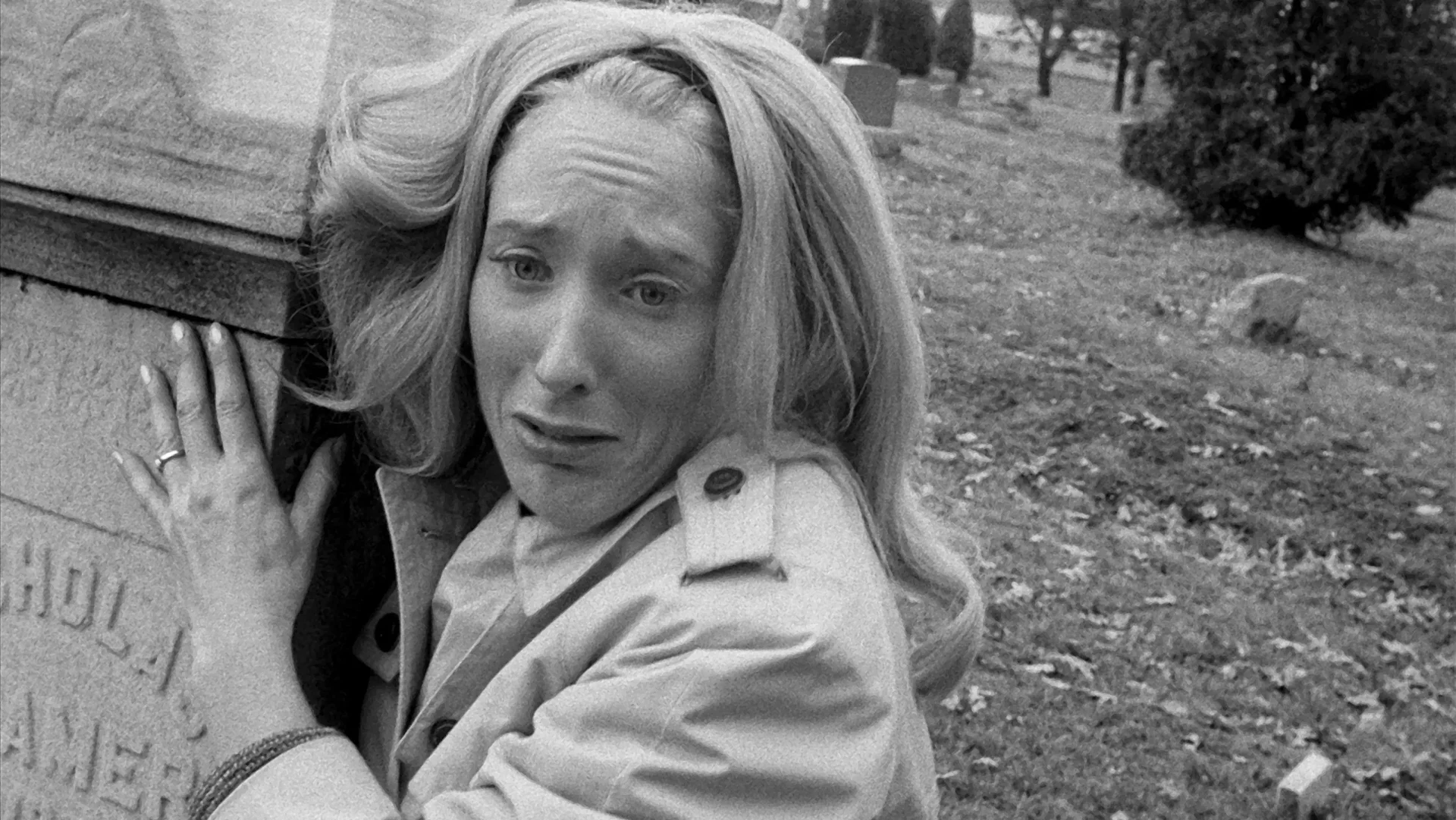
Come morning, a sheriff-led posse sweeps the area, systematically picking off ghouls. Hearing the commotion, Ben cautiously emerges from the cellar — only to be mistaken for a ghoul himself. Without hesitation, they shoot him in the head. His body is unceremoniously tossed onto a bonfire alongside the other corpses, erasing the last survivor of the night.
Night of the Living Dead (1968) Movie Themes Analysed:
Survival and Human Nature
At its most fundamental, “Night of the Living Dead” tackles human survival instincts and the way people respond to a tightly wound, terrifying situation. Ben is immediately established as the ‘hero’ of the story: resilient, least panicked in the face of hovering fear, and responsive to any rising stakes. At some point, it doesn’t really matter whether he’s right or wrong in his impulses — it’s the clarity with which he carries out his thoughts that convinces the other refugees stuck in the farmhouse with him.
On the other hand, Harry is a middle-aged family man: less agile, more panicky, and honestly, much more toxic. His approach to survival is single-minded — shut oneself in the least noticed place, the cellar — and so he insists others do the same. While this too is a perfectly acceptable human tendency, it doesn’t make for an engaging film, and so, it isn’t painted as heroic — just another stubborn challenge for Ben to spar against. Decisiveness is sharply contrasted with cowardice in the end, and the film pretty much clarifies what kind of ‘heroism’ it’s rooting for.
At the same time, the film refuses any moral whitewashing. Survival brings out both the best and the worst in people, no matter whether you’re the so-called hero or the perceived villain of a group. By taking charge all by himself, Ben is making damn sure he protects himself first. For all he cares, he isn’t able to save Tom and Judy from burning alive in the truck, or Helen from the murderous grip of her own infected daughter. And he’s no clean-cut knight either — the man’s a low-key misogynist.
He thinks he owns Barbara’s voice. As long as he’s running the show, it’s all fine for him. But the moment Barbara breaks down and tries to pour her heart out, he quite literally slaps her unconscious, like he’s putting out a fire. The mental dilemmas don’t end there — if anything, they begin with another character: Barbara herself. In a strange way, the film positions her descent into madness with much more fervour, giving her trauma a full, unsanitized picture without ever watering down its complexities.
The Undead and the Living
Ever since it started building its cult legacy beyond the constraints of genre, “Night of the Living Dead” has been prodded and dissected for its deeper critical resonances, especially against the backdrop of the America it was born into. There have been countless readings of the film mirroring a dreadful, all-too-real portrait of 1960s America.
From a human standpoint, its depiction of the dead and the living monsters is too potent to ignore. Of course, there’s the crucial closing juncture: Ben, mistaken for a ghoul and shot dead by the sheriff — a moment many have read as a veiled gut-punch to the racial violence of the time, even echoing the assassination of Martin Luther King Jr. But zoom out a little, and you see even more: the zombies here are voiceless, defined only by their basic movements and eating habits. They aren’t personalities; they’re a faceless tide. An invasive depiction of societal decay, unrelenting violence, and the slow death brought about by the collapse of any moral framework, no matter how intact the body still looks.
At least two perfectly present characters hammer this home even harder. Karen — a small kid whose only fault was being bitten by the monsters. Johnny — who’s only guilty of dragging himself unwillingly to a rural cemetery to honour a dead heritage he couldn’t give less of a fuck about (even as the mass murders are revealed to be exploding nationwide). Both of them turn into ghouls anyway — an inevitable loss of innocence with the loss of family, both literal and symbolic. The undead, then, aren’t just monsters — they’re stand-ins for detached souls, for the tragedy of humanity disfiguring itself.
A key feature of the ghouls is that, since they’re undead, they resurrect even after death. This isn’t just horror logic — it’s a brutal, deeply subversive metaphor for how violence, across human history, never actually dies. It just respawns under a different name. Vietnam, Iraq, Kargil, Palestine — the same phenomena wearing a new cloak, speaking a different language. Romero gives that horror a dramatic, supernatural face, and the scariest part is how right he is.



